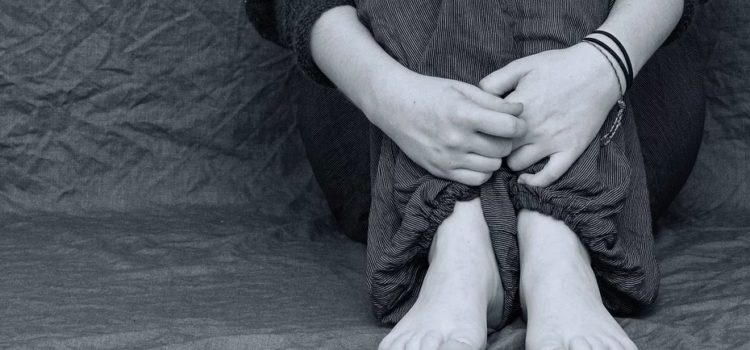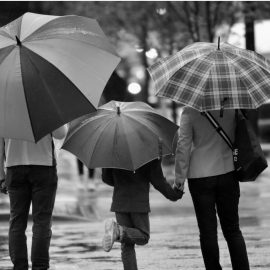

This article is an excerpt from the Shortform book guide to "If You Tell" by Gregg Olsen. Shortform has the world's best summaries and analyses of books you should be reading.
Like this article? Sign up for a free trial here.
Who were Shelly Knotek’s victims? How many of these victims escaped with their life?
If You Tell by Gregg Olsen is the story of notorious murderer Shelly Knotek. With the help of her husband, Shelly abused and killed three people, while her daughters managed to live a life away from their mother after her arrest.
Let’s look at a list of Shelly Knotek’s victims to see who suffered the worst of her abuse.
Nikki, Sami, and Tori Knotek
As Olsen explains, Shelly Knotek’s victims included her three daughters, who she began abusing at a young age. Nikki, the oldest, has a memory from when she was very young in which she woke suddenly to find a pillow pressed over her face, suffocating her. She screamed and her mother showed up instantly to comfort her. As she consoled her, Shelly insisted that Nikki’s perception of someone putting a pillow over her face had been a dream, observing Nikki’s reaction with interest. Nikki knew it wasn’t a dream but backed down in the face of her mother’s insistence. When her third and final husband, Dave, was around and not at work, he either watched passively or participated as Shelly ordered him to.
Shelly used extremely harsh punishments for even the slightest misbehaviors. She beat her children and husband with implements from around the house and took pleasure in their pain. She also locked them in closets or out of the house, forcing them to sleep outside. Frequently, the children didn’t know what they were being punished for, but she told them they were bad, ungrateful, and spoiled. However, she also showed great affection toward the children on some days. Nikki never knew what would set her mother off and bring on more abuse.
Nikki received the brunt of the abuse for most of her childhood. Shelly would punch her, throw her into walls, and beat her with a phone cord. Nikki hid the bruises on her legs under tights and never told anyone what was going on at home. She didn’t want the attention it would bring, and no one ever asked her about violence at home. As an adult, Nikki suggested that she was partly at fault for the violence she experienced because of her attempts to get away from her raging mother. Later, when Nikki moved out and the abuse fell on the younger two sisters, they, too, kept it a secret for fear of what would happen to their family if their mother got caught.
Shelly began restricting the children’s bathroom and shower use. The kids had to get her permission to use the restroom, and they were often not allowed to bathe for long periods of time, which caused embarrassment and alienation at school.
Shelly enjoyed causing pain, humiliating, and psychologically manipulating her daughters, and occasionally the abuse resulted in severe injuries. Once, as she was chasing Nikki through the house trying to beat her, Shelly shoved Nikki through a plate glass door, causing her to get cuts all over her body. Shelly immediately became apologetic and affectionate, putting her daughter in a warm bath and afterward taking her out to dinner and a stylist. She didn’t take Nikki to the hospital because, according to Sami, she wouldn’t be able to explain all the bruises and other injuries on Nikki’s body.
Sami saw these punishments and felt guilty that they were only being directed at Nikki—who she knew didn’t deserve them—and not at herself. Sami was abused as well, but she was often able to mitigate it by not resisting and by ingratiating herself with their mother. There were also some instances when Sami told on Nikki to escape their mother’s wrath, but the sisters loved each other and neither wanted the other to suffer.
Since Tori was so much younger, she was generally spared from the abuse until the older girls moved out. However, there were warning signs even when Tori was an infant. When she was born, Shelly claimed Tori was a premature baby—which was false—and that she had heart problems. She was put on a heart monitor at home. Every night, the alarm of the heart monitor would go off, and Sami and Nikki would rush downstairs to check on their sister and find Shelly holding the baby lovingly, assuring them that, “She’s fine now.” Shelly seemed to enjoy the attention. One night, Nikki came down before the alarm went off and found her mother standing over the baby holding a pillow onto her face. A surprised Shelly said again, “She’s fine now.”
Shane Watson
According to Olsen, in 1988, Shelly’s nephew Shane came to live with them at age 13. His parents were unable to take care of him, and Shelly sent him loving letters saying she wanted to help him.
The girls loved Shane and viewed him as a brother. Shelly set him up with a bedroom in the basement, but not long after he arrived, she put him to work around the house and yard. She began subjecting him to abuse as well, first confiscating his things as punishment until he was forced to sleep pillowless on a mattress on the floor, then restricting his shower and bathroom access. When the family moved to a smaller house, he had no room at all and had to sleep in Nikki’s closet with nothing but a blanket.
Many of Shelly’s punishments were about power and humiliation rather than pain, and sometimes she forced Shane and Nikki to slow dance together nude in the living room. Another time, she forced them to strip naked in the freezing cold and sit back to back on a hilltop until it was dark out.
Shane came to hate Shelly, and he and Nikki confided in each other about their suffering. They fantasized about killing her by throwing a radio into her bath, but Nikki always held onto the hope that her mother might one day miraculously turn back into the loving parent she’d been in her early childhood before the abuse began. Despite his hatred of her, Shane also felt some attachment to her since he’d never had a mother figure before her.
Kathy Loreno
Shortly after Shane came to live with them, explains Olsen, Shelly’s best friend Kathy moved in with them. She’d had a string of bad luck, had a strained relationship with her family, and was broke and needed a place to stay. She was described as a pleaser and a giver, kind and empathetic to everyone. Shelly offered to let Kathy stay with them in exchange for helping out with the kids—whom Kathy adored—and around the house. She also helped care for Shelly during her cancer “treatments,” unaware that she was faking them. Kathy needed help, but the most enticing thing Shelly offered her was the chance to be needed herself.
It was a slow transition, but eventually Shelly began abusing and degrading Kathy. She forced her to work around the house all day and beat her when she wasn’t satisfied with her work. Shelly always said Kathy was forcing her to do it by arguing and not doing what she was told. After instances of abuse, Shelly would behave lovingly and give Kathy pills to take. Olsen doesn’t note which drugs Shelly was giving Kathy, but based on what Nikki and Shane found in Shelly’s medicine cabinet—and their own experiences being drugged by Shelly—they may have included anything from beta-blockers to SSRIs to muscle relaxers to tranquilizers. She also gaslit Kathy to make her believe she was sleepwalking and misbehaving unknowingly.
As she’d done with Shane, Shelly began confiscating Kathy’s belongings as punishment, saying she wasn’t grateful enough for what Shelly did for her—ultimately taking away all her possessions including clothing. Kathy was forced to work naked around the house and had to get permission to use the bathroom or shower. Eventually, she wasn’t allowed to bathe in the house at all and instead was hosed down in the yard. Later, Shelly began pouring bleach on her as well, duct-taping her mouth so she wouldn’t scream and get the neighbors’ attention.
Shane, Nikki, and Sami pitied Kathy and felt she was foolish for staying, but they were also relieved to have someone else be the focus of Shelly’s rage. Kathy had a car and was an adult, so they didn’t understand why she didn’t just leave. The kids learned to turn a blind eye to Kathy’s abuse in order to keep themselves safe, but what they witnessed as a result permanently traumatized them.
Throughout the abuse, Shelly presented herself to Kathy as a loving protector who would keep others from hurting her, which was a similar tactic that she’d used with the children. Eventually Shelly began forcing the children to participate in Kathy’s abuse, especially Shane. He was forced to hit and kick her, and by making Kathy afraid of Shane, Shelly was able to reinforce the illusion that she was only trying to protect Kathy.
Eventually, Kathy deteriorated so much that she could barely walk or stand. Her personality was gone, and she had experienced clear cognitive decline, unable to keep her balance or speak clearly. She had difficulty breathing all the time. Toward the end, she seemed only vaguely aware of her surroundings and was almost unresponsive. Shelly’s punishments by this point had expanded to include waterboarding—which was carried out by Dave—forcing her to drink smoothies made from rotten food and forcing her to eat a cup full of salt. The children watched in helpless horror as Kathy got worse, while Shelly insisted it was all for her own good.
Ron Woodworth
According to Olsen, around 2001, another friend named Ron Woodworth moved in with the Knoteks. Like Kathy, he had run into financial problems and was broke, emotionally vulnerable, and estranged from his family. Shelly invited him to stay with them so he could get back on his feet.
Nikki no longer had contact with anyone in her family except Sami, and Tori was too young to remember what had happened with Kathy, but Ron’s arrival set off alarm bells in Sami’s head. Still, she forced herself to believe that what had happened with Kathy wouldn’t happen again and that Ron would be strong enough to withstand Shelly. She was wrong.
Again, the relationship between Ron and Shelly started out as a loving friendship, but soon Shelly began degrading him and chipping away at his self-worth. The slide into abuse happened much more rapidly than it had with Kathy, but the pattern was the same: physical abuse, restricting bathroom usage, drugging, and isolating him from family.
As punishments got worse, Shelly forced Ron to drink his own urine, punch himself in the face as hard as he could over and over, and repeatedly jump barefoot off their two-story house. His feet became covered in open wounds that wouldn’t heal.
Like Kathy’s, his body began to deteriorate. He lost weight, and his teeth fell out. When his condition started to mirror Kathy’s in her final months, Shelly seemed to grow worried and started trying to get him to move out. She said she was going to take him to a homeless shelter, but Ron refused to go and threatened to kill himself if they made him leave.
In July 2003, Ron died from his injuries. Due to a heat wave, there was a burning ban in place, so Dave buried Ron with the intention to dig him back up and burn him when the ban was lifted. Shelly insisted to Tori that he was fine and was at a friend’s house, resting. She told Tori not to tell anyone about what had been going on, and that if she did, she’d disown her. Then Shelly’s focus returned to Tori, and the abuse worsened.

———End of Preview———
Like what you just read? Read the rest of the world's best book summary and analysis of Gregg Olsen's "If You Tell" at Shortform.
Here's what you'll find in our full If You Tell summary:
- The true story about abusers and murderers Shelly and Dave Knotek
- The events leading up to Shelly and Dave's arrests and convictions
- A look into the psychology of abuse and psychopathy






